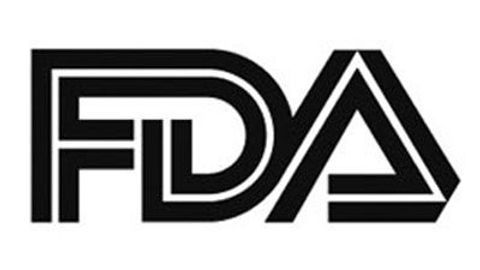Vorasidenib Secures FDA Approval in IDH-Mutant Diffuse Glioma
The FDA has granted approval to vorasidenib for the treatment of patients with IDH-mutant diffuse glioma.

- Vorasidenib (Voranigo, formerly AG-881) has become an FDA-approved, first-in-class option for patients with IDH-mutant gliomas, marking the sixth approval for Servier across cancers with IDH mutations.
- This approval for the treatment of IDH-mutant diffuse glioma is based on findings from phase 3 INDIGO trial (NCT04164901).
- Treatment with vorasidenib significantly improved progression-free survival (PFS) and delayed the time to the next intervention (TTNI).
The FDA has approved vorasidenib for the treatment of patients 12 and older with IDH-mutant, grade 2 astrocytoma or oligodendroglioma, based on data from the pivotal phase 3 INDIGO trial.1 This marks the first approval of a systemic therapy for patients in this intent-to-treat population.
“What's exciting is this is a development that we haven't seen in over 20 years, and what we found is that when we looked at our patients that received vorasidenib in comparison with the placebo, those patients had a much improved prognosis, such that their progression-free survival was extended to 27.7 months compared with 11 months, which is a very large, statistically significant difference,” explained Katherine B. Peters, MD, PhD, neuro-oncologist at Duke Cancer Center, in an interview with Targeted OncologyTM.
Katherine B. Peters, MD, PhD

Vorasidenib is an oral, selective, highly brain-penetrant dual inhibitor of mutant IDH1 and IDH2 enzymes for the treatment of IDH-mutant diffuse glioma.
In the double-blind, phase 3 INDIGO study, the primary end point of PFS per blinded independent review committee (BIRC) was met, as well as the key secondary end point of TTNI at the prespecified second interim analysis.2,3
There were 331 patients randomly assigned to receive oral vorasidenib (n = 168) at 40 mg once daily or matched placebo (n = 163) in 28-day cycles. In the vorasidenib arm, the median age of patients was 40.5 years vs 39.0 years in the control arm. Histologic subtypes of low-grade glioma were evenly distributed between oligodendroglioma and astrocytoma, and all patients had an IDH mutation, the majority of which had an IDH1 alteration (97% in the vorasidenib arm vs 93.3% in the placebo arm). More than half of patients also had a codeletion in chromosome 1p/19q.
The median follow-up was 14.0 months (IQR, 10.1-17.9) vs 14.3 months (IQR, 10.0-18.1) for placebo.
A statistically significant and clinically meaningful PFS (HR, 0.39; 95% CI, 0.27-0.56; P =.000000067) was seen with vorasidenib, and the median PFS was 27.7 months (95% CI, 17.0-not estimated) compared with 11.1 months (95% CI, 11.0-13.7) among those treated with placebo.2,3
TTNI was statistically significant and favored vorasidenib (HR, 0.26; 95% CI, 0.15-0.43; P =.000000019). Though the median TTNI was not reached for vorasidenib, in the placebo arm, it was 17.8 months. In the vorasidenib arm, reduced tumor volume was also observed, seen by a mean of 2.5% (95% CI, –4.7% to –0.2%) every 6 months vs in the placebo arm where tumor volume increased by a mean of 13.9% (95% CI, 11.1%-16.8%) every 6 months.
Additional findings presented at the 2023 American Society of Clinical Oncology (ASCO) Annual Meeting and simultaneously published in The New England Journal of Medicine and showed that the PFS rate at 18 months was 60.4% (95% CI, 48.3%-70.5%) with vorasidenib vs 26.7% (95% CI, 17.1%-37.4%) with placebo. At 24 months, these rates were 50.7% (95% CI, 36.2%-63.5%) vs 17.6% (95% CI, 7.1%-31.9%), respectively.
The objective response rate was 10.7% (95% CI, 6.5%-16.4%) vs 2.5% (95% CI, 0.7%-6.2%) with vorasidenib vs placebo (OR, 4.88; 95% CI, 1.56%-15.25%) and in the vorasidenib arm, there were 2 partial responses (1.2%) and 16 patients who had minor responses (9.5%) vs only minor responses in the placebo arm. The majority of patients had stable disease, with progressive disease seen in 6.0% of those in the vorasidenib arm and 8.6% of those in the placebo arm.
Looking at safety, 94.6% of patients in the vorasidenib arm had AEs of any grade vs 93.3% in the placebo arm. Grade 3 or higher AEs were observed in 22.8% vs 13.5% of patients in each arm. The most common AEs seen in the vorasidenib arm were related to liver enzyme increases, including increases in alanine aminotransferase (38.9%; 9.6% grade 3 or higher), aspartate aminotransferase (28.7%; 4.2%), and gamma-glutamyl transferase (15.6%; 3.0%).
Further, 3 serious AEs were reported with vorasidenib, each of which were deemed to be associated with the treatment. All serious AEs were considered resolved at the time of the analysis in September 2022.
A total of 3.6% of patients treated with vorasidenib discontinued treatment vs 1.2% in the placebo arm. Dose reductions were required in 10.8% and 3.1% of patients in the vorasidenib arm and the placebo group, respectively.
REFERENCES:
1. FDA approves vorasidenib for Grade 2 astrocytoma or oligodendroglioma with a susceptible IDH1 or IDH2 mutation. News release. FDA. August 6, 2024. Accessed August 6, 2024. https://tinyurl.com/3jv48wa9
2. Mellinghoff IK, van den Bent MJ, Blumenthal DT, et al. Vorasidenib in IDH1- or IDH2-mutant low-grade glioma. N Engl J Med. Published online June 4, 2023. doi:10.1056/NEJMoa2304194
3. Mellinghoff IK, van den Bent MJ, Blumenthal DT, et al. INDIGO: A global, randomized, double-blinded, phase 3 study of vorasidenib versus placebo in patients with residual or recurrent grade 2 glioma with an IDH1/2 mutation. J Clin Oncol. 2023;41(suppl 17):LBA1. doi:10.1200/JCO.2023.41.17_suppl.LBA1
FDA Approves FoundationOne CDx as Companion Diagnostic for Tovorafenib in Pediatric Low-Grade Glioma
January 17th 2025FoundationOne CDx is now FDA-approved as the first companion diagnostic for tovorafenib, enabling targeted treatment for relapsed/refractory pediatric low-grade glioma with BRAF mutations or rearrangements.
Read More